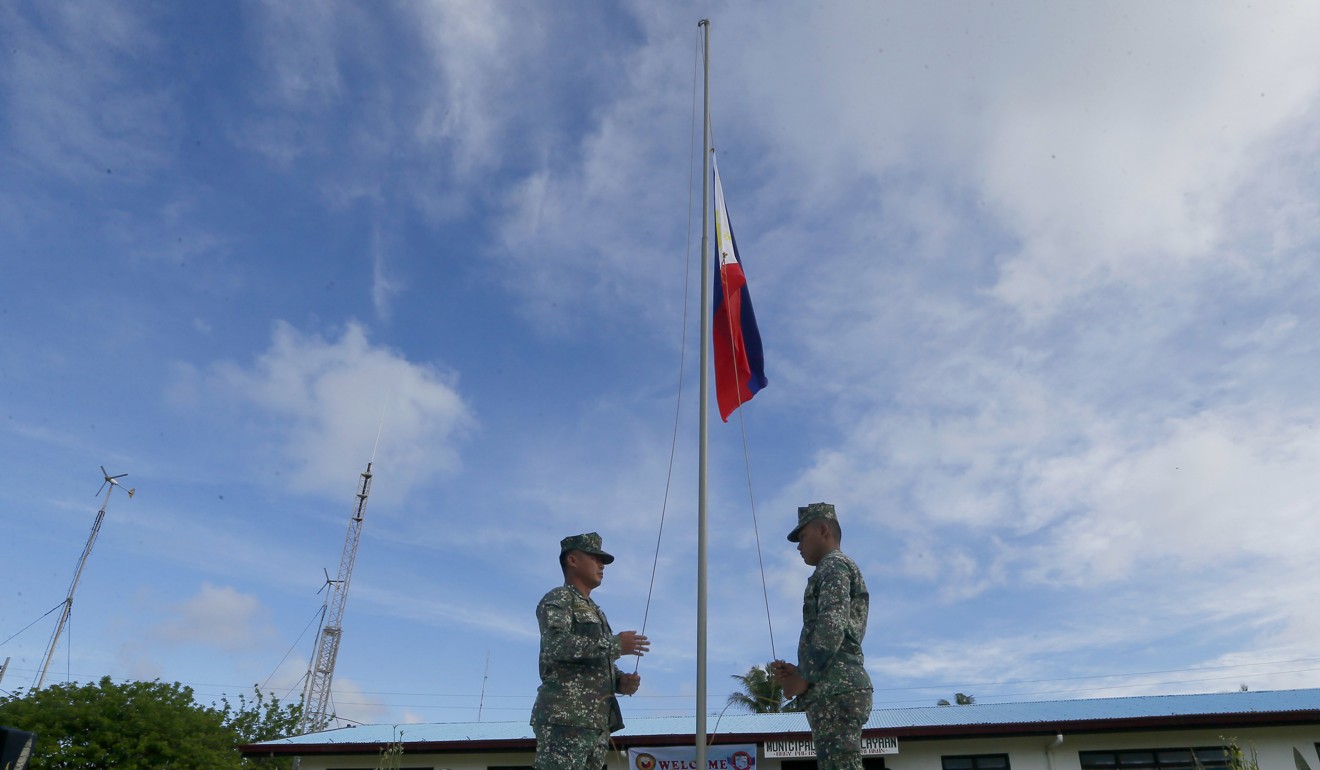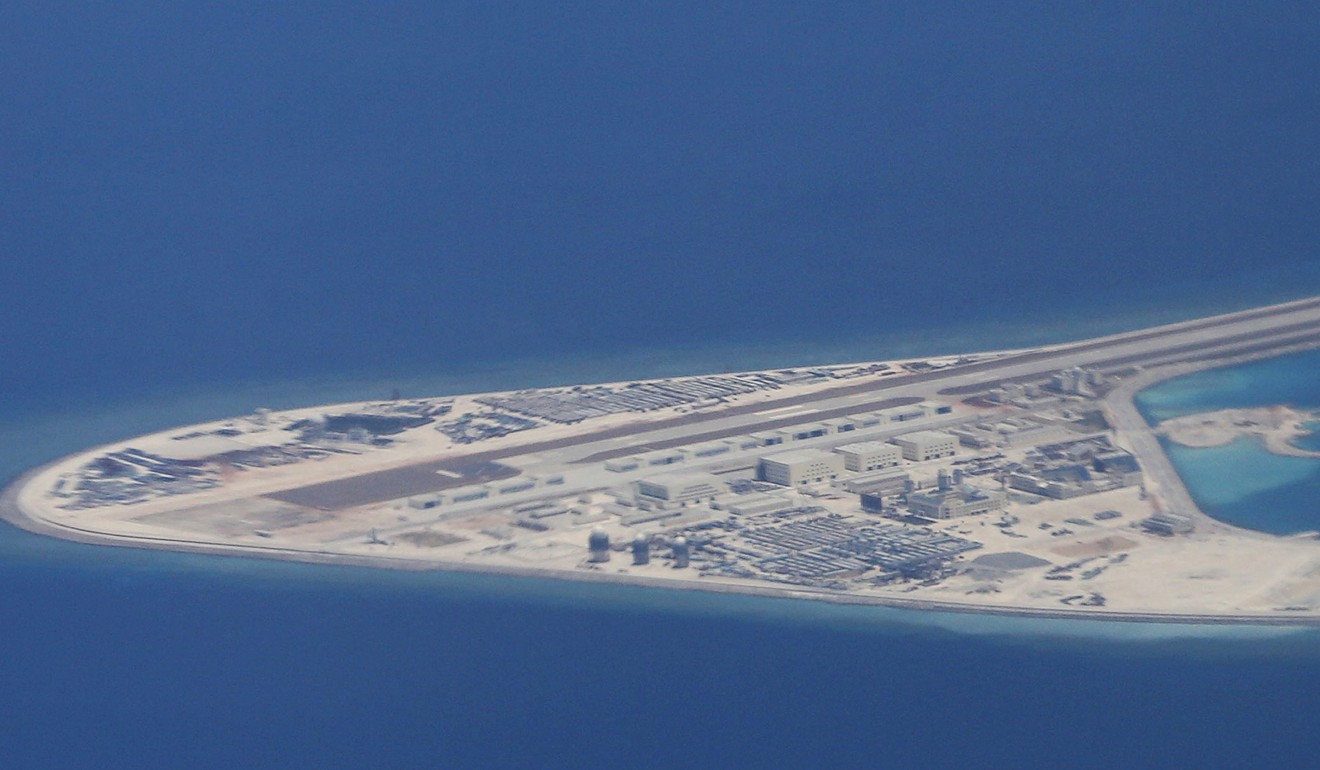
US patrols challenging Beijing in South China Sea will continue, says US Navy commander
Freedom of navigation operations in the disputed waters still ongoing, says US Navy commander
The United States’ naval patrols in the South China Sea will continue as part of Washington’s aim to challenge “excessive maritime claims” in the disputed waters, the US Navy commander says.
“US forces operate in the Asia-Pacific region on a daily basis, including in the South China Sea”, US Navy Commander Gary Ross said in an emailed response to questions about whether US “freedom of navigation” operations – also known as “FONOPs” – in the area have been halted.
“We are continuing with regular FONOPs, as we have routinely done in the past and will continue to do in the future,” Ross said, adding that the patrols are “not about any one country”.
He made no mention of China’s claims in the disputed region.
Speculation that US President Donald Trump’s administration wants to scale back FONOPs that might anger Beijing as a bargaining chip to support other priorities in the region followed a New York Times report that the Pentagon had turned down US Pacific Command requests to sail warships near islands claimed by China in the South China Sea.

“It’s fair to say it hasn’t been paused, but it’s also fair to say there have not been any FONOPs since Trump has taken office. We could read too much into that,” said Walter Lohman, director of the Asian Studies Centre at The Heritage Foundation, a Washington DC-based think tank. “This is a matter of a new administration coming in and having to get its plan together on how to move forward.”
During his 2016 presidential campaign, Trump pledged to challenge China on its construction of military installations on islands claimed by multiple parties in the South China Sea. By claiming these islands as China’s sovereign territory, Beijing could threaten the movement of many billions of dollars worth of cargo through the region.
The US president has been silent on matters relating to the South China Sea and backed away from other issues such China’s operations in international currency markets since North Korea’s missile tests, which observers say are part of a nuclear weapons programme, emerged as Trump’s biggest geopolitical challenge.
Trump and US Secretary of State Rex Tillerson have called on Beijing repeatedly to exert more pressure on Pyongyang to end its weapons programme.
“You’re not going to get any more help on North Korea because you are more accommodating to the Chinese somewhere else,” Lohman said. “They have interests in North Korea and those interests aren’t changing. If you back off on freedom of navigation in order to get help on Korea what you’re going to end up with is no help on Korea and having ceded your rights on the South China Sea.
“I expect we will see a FONOP in the South China Sea in the near future,” said Bonnie Glaser, an Asia-Pacific security expert at the Centre for Strategic and International Studies in Washington.
When asked by the Post for a time frame when a FONOP may take place, “Soon,” she added.
Glaser said the Trump administration has been slow to develop a policy toward the South China Sea because North Korea has been a much higher priority. “But I don’t think that means it is unimportant or will be used as a bargaining chip with China.”

The US military has been requesting through the chain of command for FONOPs since last February: one for a US warship to sail within 12 nautical miles of Scarborough Shoal, a disputed reef in the South China Sea that is claimed by China and Philippines.
Two others were requested by the US Navy. However, all those requests had been turned down by top Pentagon officials before they even made it to President Trump’s desk, the New York Times reported on May 2.
Glaser said the FONOP programme, which has been in place since 1979, is global, and will continue.
“I don’t see any evidence that there has been a debate between the White House, the Pentagon, and PACOM on this matter,” she said. “Perhaps there has been a difference on the issue of urgency, but not over whether or not FONOPs should continue.”
The chain of command could be back in moving again upon the South China Sea.
The Trump administration has not yet conducted any so-called freedom of navagation patrols in the South China Sea since Trump took his office in last January. During the last 8 years of the Obama administration, US had carried out 6 FONOPs from 2013 to 2016.


